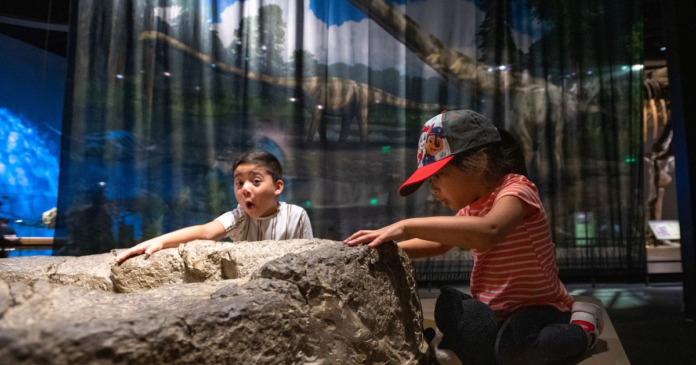Hollywood can sweep you away to Jurassic Park for a few hours, but if you live in Texas, you already live in a dinosaur wonderland.
A recent news story in The New York Times drew attention to efforts by a commercial paleontologist to build a public museum dedicated to our state’s fossil record. That geological record is extraordinarily rich, capturing stretches of life on Earth for the past 300 million years. It’s what makes Texas a magnet for paleontologists and other scientists.
Advertisement
That’s all the more reason to nurture Texas students’ interest in the natural sciences and keep building pipelines for STEM careers.
Advertisement
The education of paleontologists is highly technical. Students who want to go into paleontology get a bachelor’s degree in biology or geology (or both) and then specialize in graduate school. But there is a whole universe of careers for people who are interested in the natural sciences.
Opinion Get smart opinions on the topics North Texans care about. Email Address By signing up you agree to our Terms of Service and Privacy Policy SUBMIT
Take the study of the physical aspects of Earth. According to the Bureau of Labor Statistics, Texas is the state that employs the most geoscientists, a category that includes paleontologists, oceanographers and petroleum geologists, the people who test rocks and sediment for the presence of oil and gas.
Advertisement
Many kids, and a lot of us adults too, are naturally fascinated by the otherworldly appearance of prehistoric creatures. Families and teachers can mine that curiosity to turn it into a deeper, enduring interest in science.
The whole state is studded with exciting discoveries. Big Bend National Park alone is a paleontologist’s paradise, where more than 90 dinosaur species have been discovered.
Here in North Texas, kids can follow dinosaur footprints along the Paluxy River at Dinosaur Valley State Park in Glen Rose or crane their necks at the skeleton of Paluxysaurus jonesi, the official state dinosaur, at the Fort Worth Museum of Science and History. A mock dig site at the museum is so popular that even in a heat wave, children plopped down in the sand pit to dust off “specimens” on a recent Saturday.
Advertisement
And then there is the Perot Museum of Nature and Science in Dallas, where kids can roam a hall filled with all sorts of fossilized wonders, many from Texas and unearthed close to home. There is a mammoth found along the banks of the Trinity River in southern Dallas, a huge marine lizard known as Tylosaurus found at Lake Ray Hubbard and a giant sea turtle also found in Rockwall County, from back when North Texas was a tropical sea.
Advertisement
Ron Tykoski, the museum’s vice president of science and curator of vertebrate paleontology, said these fossils help children make the connection that prehistoric creatures were real and not science fiction. That realization can inspire kids to learn more on their own.
“If only one kid in a hundred goes out of there and goes, ‘I want to be a scientist when I grow up,’ because they saw something there that excited them, whether it was a dinosaur, or a rock, or a plant fossil … if we’ve done that, we’ve succeeded,” Tykoski said.
We welcome your thoughts in a letter to the editor. See the guidelines and submit your letter here. If you have problems with the form, you can submit via email at letters@dallasnews.com


